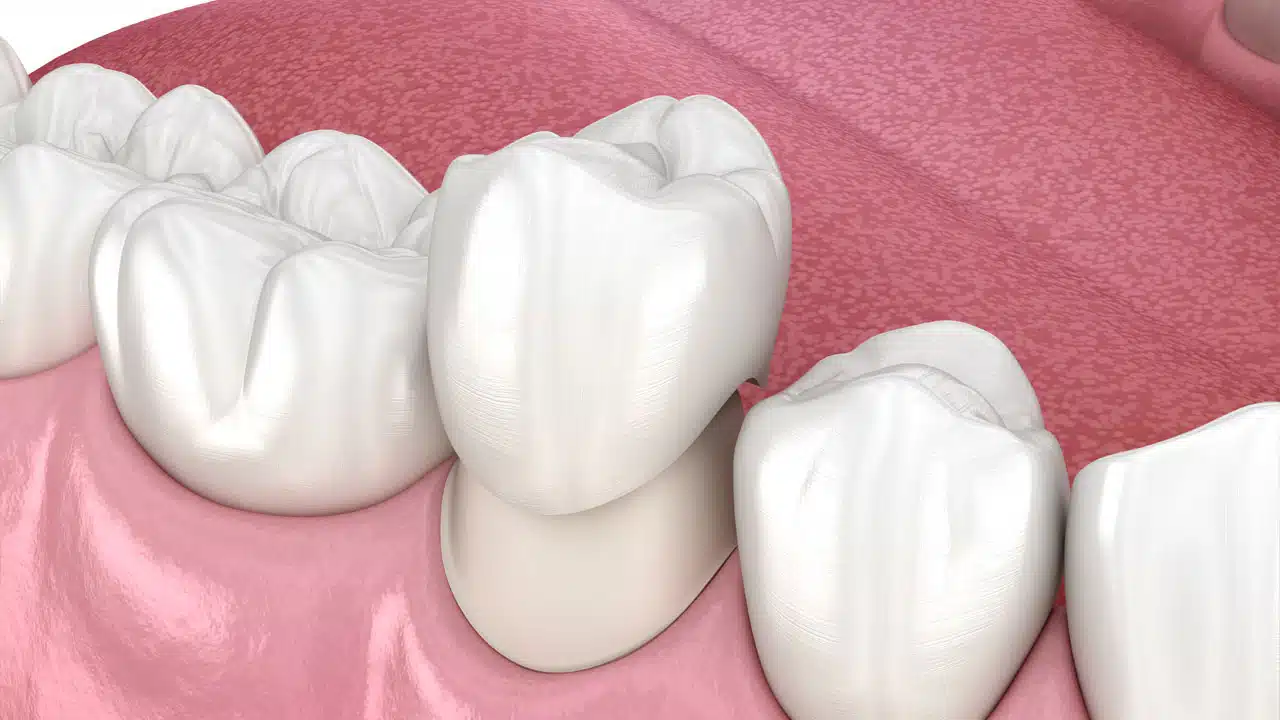
A dental crown is a restoration used to cover and protect teeth that have been broken, cracked, or have extensive decay. A single crown is the most common restorative procedure for tooth loss, with around 2.3 million implant-supported crowns made annually in the United States.
Despite their popularity and durability, crowns do not last forever. Wear and tear, chips, and crown movement are all signs that the restoration should be replaced. If left untreated, the underlying tooth could deteriorate, leaving it vulnerable to decay.
Identifying when a dental crown needs to be replaced is essential to preserve your smile.
Receding Gum Line
Gum recession is a condition where the gums pull away from the teeth, exposing more of the crown and underlying tooth structure. It increases the risk of root decay, leading to further damage and tooth loss. Root decay is especially concerning for adults over 65 since it is one of the primary causes of tooth loss in this age group.
Pain or Swelling
An improperly placed or fitted crown may not adequately cover all sides of the tooth’s surface, leaving some areas vulnerable to decay and leading to tooth pain.
If the crown is placed too far below the gum line, which is common if there was improper preparation before fitting the crown, it can cause irritation and inflammation, leading to swollen and tender gums.
Discoloration
When plaque and tartar build up on the crown over time, it can give your restoration a yellow tinge. Unfortunately, dental crowns cannot be professionally whitened, so they must be replaced to avoid a patchy, stained smile.
Visible Wear and Tear
Chewing on hard objects, grinding teeth, and biting fingernails can all cause visible wear and tear to the crown. Minor wear and tear can often be mended with composite resin bonding or contouring instead of needing an entirely new crown.
Chips, Cracks, or Fractures
Damaged dental crowns leave the underlying tooth vulnerable to bacterial growth and decay. It must be replaced if your dental crown is chipped, cracked, or fractured.
Crown is More Than 10 Years Old
The average lifespan of a crown is around 10 years. This varies depending on the material used in the crown, how well it is fitted, and how well you take care of it. Crowns can last longer with good oral hygiene and regular dental checkups.
How to Prolong the Life of Your Crowns
While your dental crowns won’t last forever, there are a few healthy habits you can practice to ensure you get the longest lifespan out of your restoration possible, including:
- Modifying your flossing technique to avoid loosening the dental adhesive
- Avoiding hard foods like ice, nuts, and candy
- Not using your teeth as tools to open packages
- Wearing a mouthguard if you play contact sports or grind your teeth
- Visiting your dentist twice yearly for a professional cleaning
Restore Your Smile With Dental Crowns
If you experience any damage to your dental crown, contact your dentist for an emergency appointment. Crowns are essential to your dental health and should be replaced immediately.
If you are unsure about the health of your dental crowns, book a consultation appointment at Valley Dental Care today.